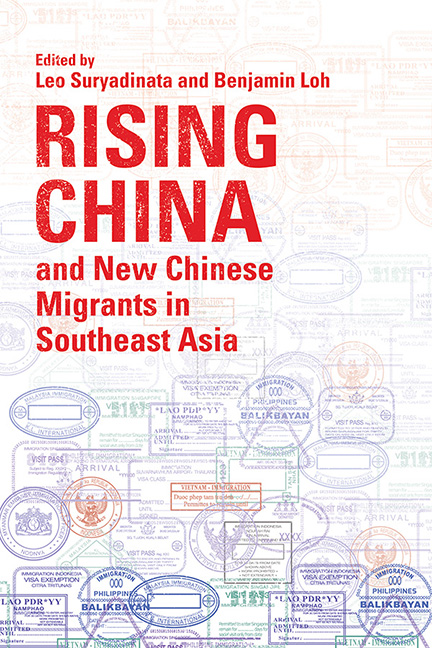Book contents
- Frontmatter
- Contents
- About the Contributors
- Introduction: Rising China and New Chinese Migrants in Southeast Asia
- Part I General Overviews on Rising China and Xin Yimin
- Part II China’s Soft Power, Xin Yimin and Local Communities
- Part III New Chinese Migrants and Local Communities
- Part IV New Chinese Migrants and Local Economies
- Index
11 - Indonesian Elites’ Perceptions of New Chinese Migrants during the Jokowi Presidency
Published online by Cambridge University Press: 09 January 2024
- Frontmatter
- Contents
- About the Contributors
- Introduction: Rising China and New Chinese Migrants in Southeast Asia
- Part I General Overviews on Rising China and Xin Yimin
- Part II China’s Soft Power, Xin Yimin and Local Communities
- Part III New Chinese Migrants and Local Communities
- Part IV New Chinese Migrants and Local Economies
- Index
Summary
In the last two decades, the relationship between Indonesia and China has undergone a significant change. While in the past, particularly in the first two decades of the period of New Order Indonesia, the two countries had a tumultuous relationship, today their relations have been significantly enhanced. Such a good relationship began to develop in the year 2000, after President Abdurrahman Wahid entered his presidential term. President Wahid even made China the first country that he officially visited as the president. Since then, cultural exchanges between China and Indonesia have intensified, while their economic relations have increased unprecedentedly. Indonesia’s subsequent presidents have continued President Wahid’s friendly attitude towards China. In 2005, President Susilo Bambang Yudhoyono (popularly known as SBY) signed a strategic partnership agreement with President Hu Jintao, an agreement that was followed by an influx of Chinese investments into Indonesia. Less than a decade later, during President Xi Jinping’s visit to Jakarta in 2013, Indonesia and China signed another agreement that made both countries comprehensive strategic partners.
The above phenomenon has opened the way for much more frequent encounters between the Chinese and Indonesian people. Such encounters have not only occurred due to the increased visits by Indonesians to mainland China, but also as a result of the coming of Chinese people to this Southeast Asian country. In the last few years, people from mainland China have become among the largest groups of foreign visitors to Indonesia. While the majority of these people come for tourism, and hence only stay for a short period, a number of them arrive in the country for other purposes, including work, study and business. This latter group constitutes a group of ‘new Chinese migrants’ (xin yimin) in Indonesia.
These new Chinese migrants have a number of differences from the so called ‘lao yimin’ (old migrants), particularly in terms of levels of education, proficiency in the local language, values, and adaptability to the local situation. While the descendants of the Chinese old migrants have transformed into a major ethnic group—popularly known as the ethnic Chinese in Indonesia (Chinese Indonesians)—and have also had a high degree of interactions with other ethnic groups in the country, these new Chinese migrants are relatively alien to the majority of the Indonesian people, who are usually called the ‘pribumi’ (indigenous) Indonesians.
- Type
- Chapter
- Information
- Rising China and New Chinese Migrants in Southeast Asia , pp. 194 - 210Publisher: ISEAS–Yusof Ishak InstitutePrint publication year: 2022

